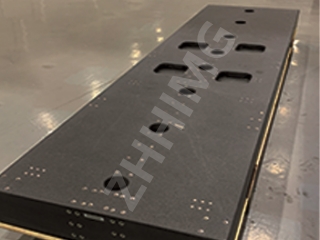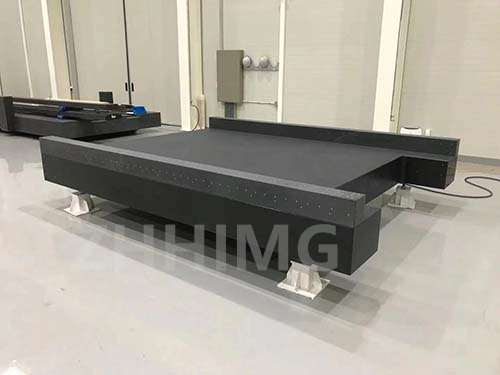Granite surface plates are indispensable tools in precision measurement and manufacturing, but not all plates are created equal. Grade A and Grade B granite surface plates differ significantly in terms of accuracy, surface finish, application scenarios, and cost. Understanding these distinctions helps industries select the most suitable option for their specific needs.

Flatness Tolerance: The Core of Precision
Flatness tolerance is the primary differentiator between the two grades. According to the American Society of Mechanical Engineers (ASME) B89.3.7 standard, Grade A plates offer higher precision. For example, on a 12” x 12” plate, Grade A typically has a flatness tolerance of ±0.00008 inches, ensuring a nearly perfect flat surface. In contrast, Grade B plates have looser tolerances, around ±0.00012 inches for the same size. This difference makes Grade A ideal for applications requiring extreme accuracy, like calibrating high - end measuring instruments, while Grade B is sufficient for general inspection tasks in workshops.
Surface Roughness: Impact on Measurement
Surface roughness also varies between the grades. Grade A plates undergo more extensive lapping and polishing processes, resulting in a smoother surface with a roughness average (Ra) often below 0.0005 inches. This ultra - smooth finish minimizes friction and prevents scratches on delicate components during measurement. Grade B plates, with an Ra value of around 0.001 inches, are coarser. Although they can still perform basic measurement functions, they may not be suitable for handling sensitive parts.
Application Scenarios: Matching to Requirements
The choice between Grade A and Grade B depends largely on the application. In aerospace and semiconductor manufacturing, where micrometer - level precision is crucial, Grade A plates are preferred. For instance, when measuring the flatness of a turbine blade or the alignment of microchips, even the slightest deviation can affect product performance. Grade B plates, however, are commonly used in automotive manufacturing, general machining, and educational institutions. They are adequate for checking the dimensions of engine blocks or teaching basic measurement principles without the need for ultra - high precision.
Manufacturing Process and Cost: Trade - offs to Consider
Grade A plates require a more meticulous manufacturing process. Craftsmen spend more time on material selection, precise cutting, and multi - stage polishing to achieve the desired flatness and surface finish. This higher level of craftsmanship, along with the need for stringent quality control, drives up production costs. As a result, Grade A plates are typically 30 - 50% more expensive than Grade B counterparts. For budget - conscious industries or applications with less demanding accuracy requirements, Grade B plates offer a cost - effective alternative.
In summary, Grade A and Grade B granite surface plates cater to different levels of precision and application needs. While Grade A excels in high - end, accuracy - driven environments, Grade B provides reliable performance at a lower cost for general - purpose use. By carefully evaluating these differences, manufacturers and users can make informed decisions that optimize both precision and cost - effectiveness.
Post time: May-23-2025

